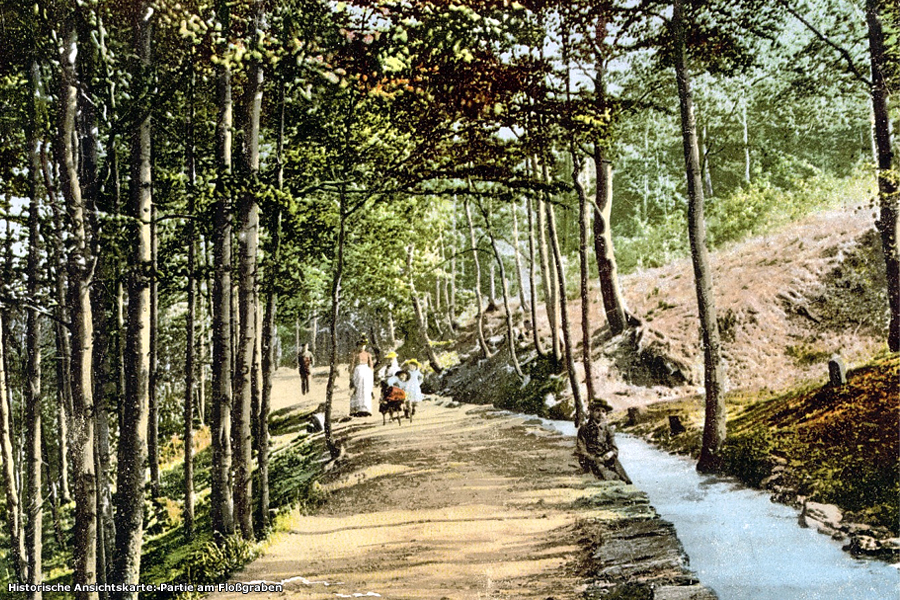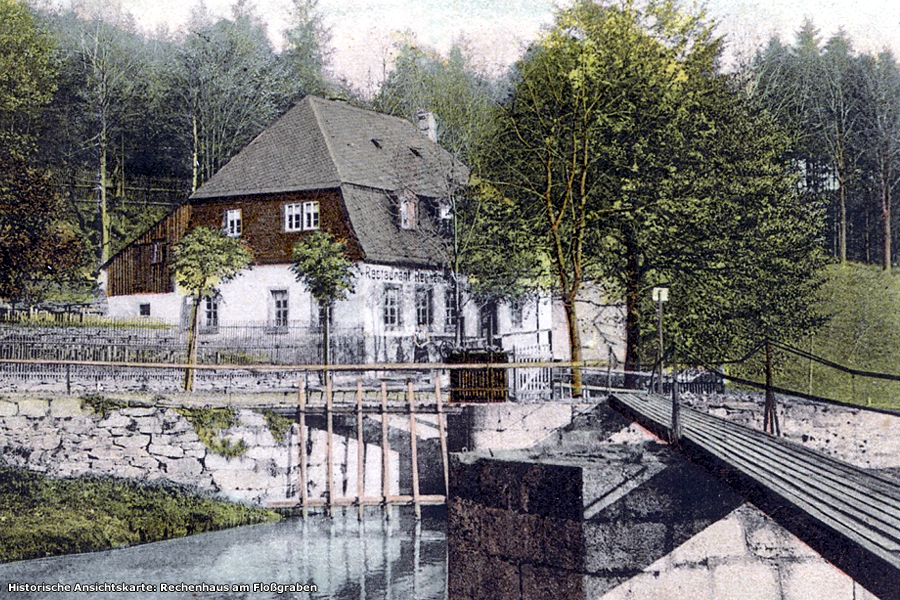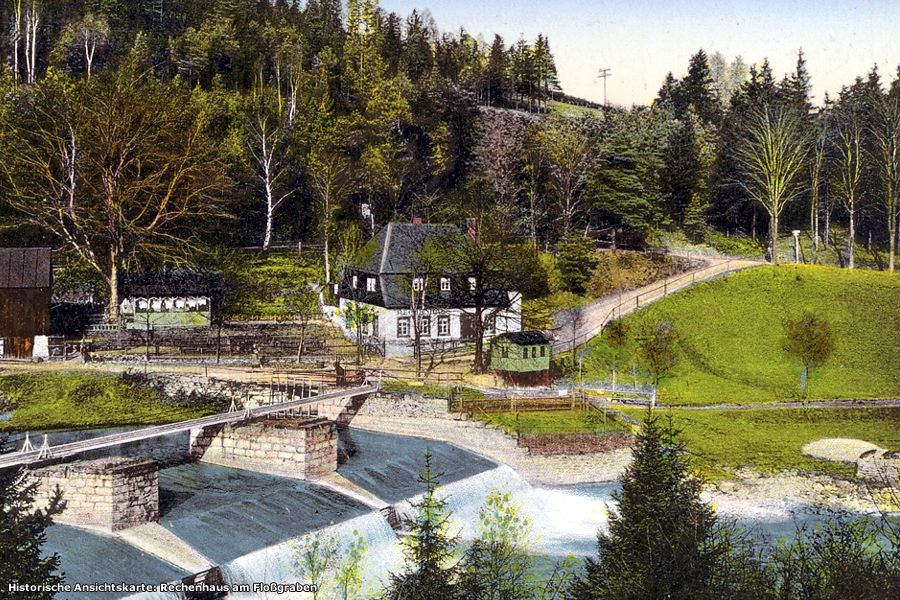
Floßgraben
Der auf der gegenüberliegenden Seite der Mulde befindliche Kunstgraben ist der sogenannte Floßgraben. Er wurde von 1556 bis 1559 errichtet und stellt eine herausragende technische Leistung unserer Vorväter dar. Er führte vom Rechenhaus (am gegenüberliegenden Muldeufer) über Aue bis nach Schlema zum heutigen Zechenplatz und hatte eine Gesamtlänge von 15,3 km. Der Floßgraben überwand auf dieser Strecke einen Höhenunterschied von 70 m. Die Gesamtkosten für den Bau beliefen sich damals auf stattliche 3.587 Gulden, 2 Groschen und 2 Pfennige.
Der ursprüngliche Floßgraben ist heute nicht mehr vollständig erhalten. Am Rechenhaus wurde zum Beispiel das große Wehr in der Mulde beim großen Hochwasser 1954 zerstört. In Schlema endet er heute im Kurpark. Dazu wurde 1997 ein neues Stück des Grabens vom sogenannten Radiuminstitut bis zu den Kaskaden im Kurpark angelegt.
Notwendig wurde der Bau des Floßgrabens durch reiche Silberfunde im Schneeberger Bergrevier und den dadurch aufstrebenden Bergbau in der Region. In den Gruben und Schmelzhütten benötigte man reichlich Holz, welches möglichst schnell und preiswert aus der waldreichen Auersbergregion nach Schneeberg transportiert werden sollte. Hierfür machte man sich die Wasserkraft zunutze. Im Frühjahr und Herbst flößte man deshalb Holz auf der Mulde und über den Floßgraben direkt bis nach Schlema. Am Schlemaer Zechenplatz lagerte man für kurze Zeit das geflößte Holz zur Trocknung und transportierte es schließlich mit Fuhrwerken nach Schneeberg.
Für den Transport des Holzes auf dem Wasserweg waren Flößerknechte verantwortlich. Diese mussten beim Flößen u. a. darauf achten, dass am Graben und besonders in den Kurven kein Holzstamm stecken blieb, damit am Damm keine großen Schäden entstanden. Weiterhin war noch ein Grabensteiger unterwegs, der täglich den gesamten Floßgraben ablaufen musste. Dieser war verantwortlich für den ordnungsgemäßen Zustand des Grabens.
Das Rechenhaus wurde zeitgleich mit dem Floßgraben errichtet und diente dem Grabensteiger als Wohnhaus. Weiterhin besaß das Haus seit seiner Erbauung Schankrecht und zählt somit zu einem der ältesten Gasthäuser Sachsens.
Der Graben war bis 1951 im Besitz der Stadt Schneeberg und kein öffentliches Gelände. Es war streng verboten, den Graben zu betreten oder unerlaubt Wasser zu entnehmen. Heute verläuft entlang des Floßgrabens ein beliebter Wanderweg.
Fotos & Bilder auf dieser Seite: www.photo-2u.de, Sammlung Beate Bauer



